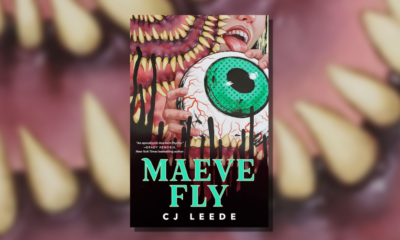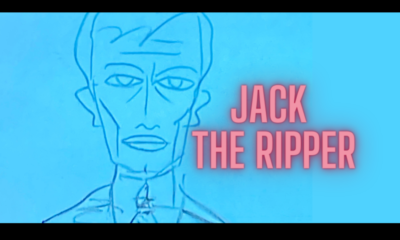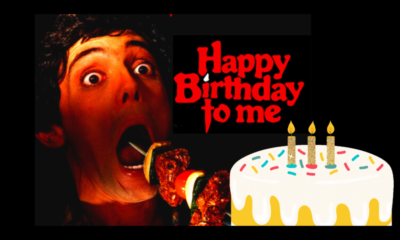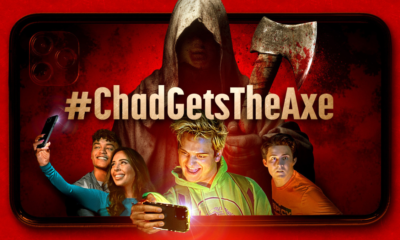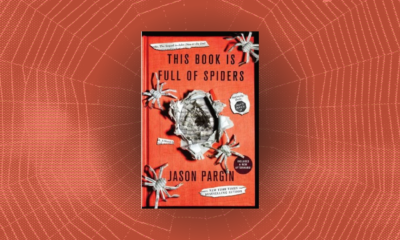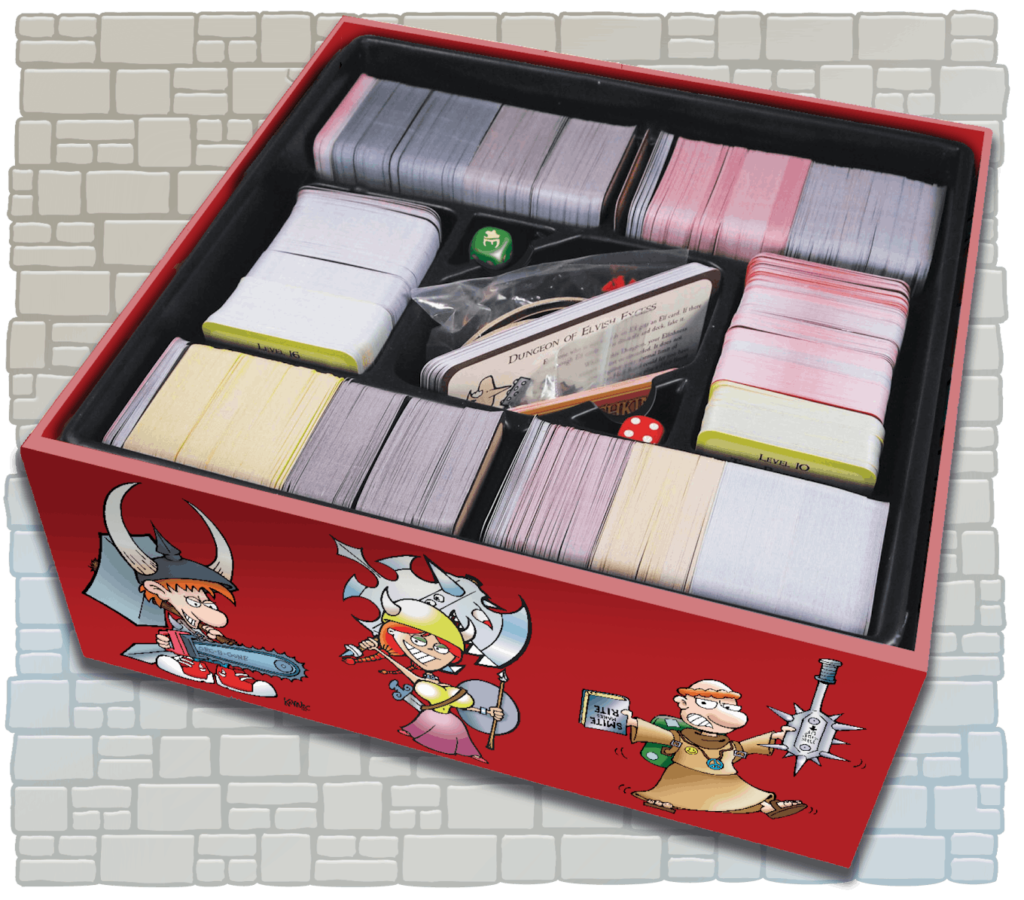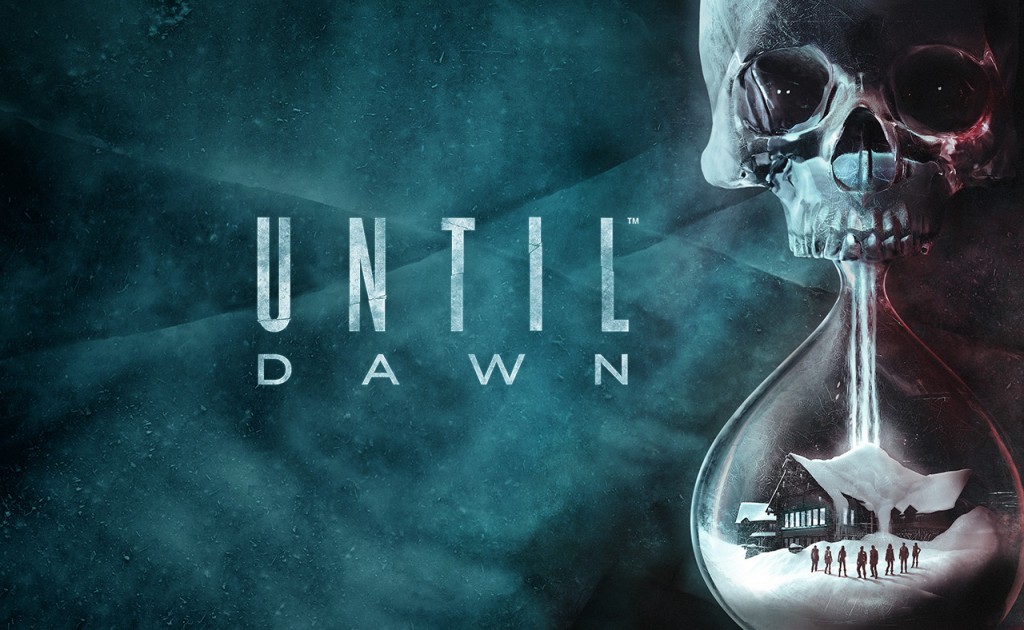
Until Dawn • A butterfly flaps its wings and Ashton Kutcher quakes
More Videos
Published
4 years agoon
By
Jake Neville
Here’s a genre of horror in gaming we haven’t touched upon yet – the interactive drama survival horror. Although, I’m not certain that it constitutes as its own genre as there are really only two games that come to mind, being 2015’s Until Dawn by Supermassive Games and Telltale’s The Walking Dead series. But if there are any more games of this design out there, please do let me know and I’ll get onto the genre police right away and have interactive drama survival horrors officially instated as an official genre with their minimum three title requirement. Either way, today we’ll be examining the PS4 exclusive Until Dawn and seeing what happens when the Goosebumps choose-your-own-adventure books that I used to hide in the school library from the other kids are made digital, injected with young adult horniness, and a lot of blood and gore.
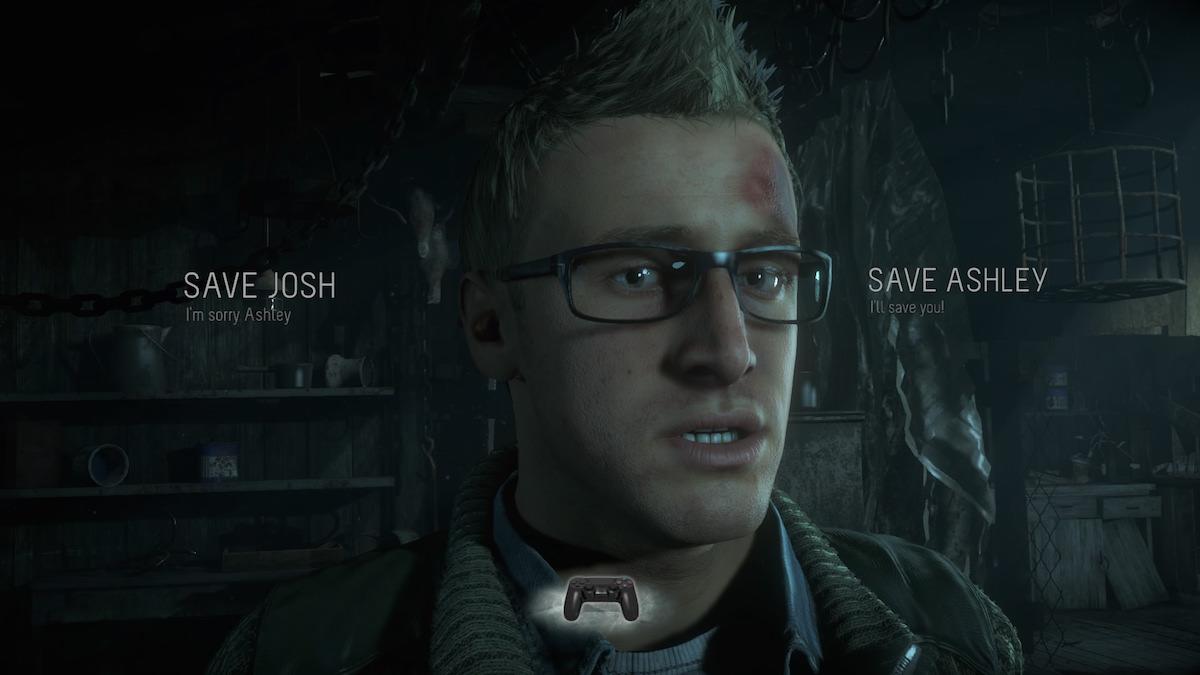
The real challenge is trying not to kill off the annoying ones
It’s hard to talk about the story without talking about the gameplay as the nature of the genre (interactive dramas are a little more common than interactive drama survival horror e.g. Detroit: Become Human) is directly built around the branching narrative thread mechanics that is its main attraction. As such no two play throughs are ever the same, as the advertisements say, due to the game’s ‘butterfly effect’ system that swears even the tiniest decisions can greatly increase and decrease the character’s chances of survivability. With that said, the main premise of the game is that a group of friends are returning to a holiday lodge on a snowy and isolated mountain one year after the accidental death of their two friends at the same lodge through bullying by said group of friends. From the get go we’re not made to like any of the characters but as the game cleverly posits you in the shoes of each of the seven characters at one time or another (sadly Rami Malek is not playable). In doing so you get to see the inner workings of their mind and how they engage with the other characters, forcing relatability. Naturally players will feel more drawn to one character over another (I personally only liked Hayden Panettiere and Mike because he was hot) and wanting to keep each character alive as they all split apart in their own storylines can be challenging. As much as the game boasts the variety of narrative threads to follow, it is rather linear in where characters can go and what they can do, and is more about finding clues along the way to keep your characters from biting the dust while trying to say the right things to get them to bang while being chased by a creepy clown murderer. The story is quite stellar in its pacing though and keeps the mystery interesting and unfolding in an intriguing way, making sure that players are always engaged.

Quicktime events are not the same thing as fun
I loathe quicktime events, as do a lot of gamers. They’re a cheap way of forcing suspense and risk by making the player press a random button at the exact right time to keep them from dying or stumbling. Until Dawn is full of quicktime event sequences that have the player choose betweeen safe and treacherous paths while escaping danger ot trying to save someone. Too many stumbles in the quicktime events and your character fails, and choose too many safe paths your character fails. Outside of these sequences a chunk of the gameplay is made up of exploration and the aforementioned gathering of clues. But what Until Dawn really brings to the table to innovate the genre (easy to do when there’s only two titles in the genre) is its adaptive horror system. Acting as prologues to each story chapter is the appearance of Peter Stormare (Fargo) as a therapist for the actual player. His purpose is to recount the events of the game, judge the player for their actions, prod them with questions about their decisions, and most importantly to create a pyschological profile of the player. The therapist will ask the player to tell them which they find scarier, spiders or snakes, scarecrows or clowns, barns or caves, knives or guns, and will change certain aspects of the main story to enhance the horror value for the player. While this is certainly welcome and a fun experiment, it isn’t implemented in any meaningful way other than some graphic changes in certain scenes i.e. the killer chases you with an uzi instead of a letter opener.

When you can’t decide, choose everything
For a game so centred on making their players meditate on their choices and regret them later for not being careful enough, the developers certainly did not share the same philosophy in putting the game together. Don’t get me wrong they clearly love the game and love horror as a whole, but the game is a bit weird and unfocused when one considers the amount of tropes and directions they’ve thrown into the title. The beginning of the game sets up a stalker slash slasher kind of thing, but then there is also a scene with a ouija board (on which I have given my opinion.) which sets up a ghost story, but then there are torture dungeons which feel like Saw, and then things start to go supernatural, and then we go to a mental asylum for reasons, and there’s a cabin in the woods too. All the different directions, plus how keen it is to change things up via the adaptive horror mechanic, leaves the game feeling a bit unrefined. Although for lovers of horror they might take it as pure fun and as a love letter. Until Dawn does also boast some top notch graphics, production design, and aural atmospheres that certainly tie the horror elements neatly together.
Until Dawn is not at all an until yawn
I’ve played this game three times, once when I was 17, another when I was 19, and another when I was 20 which actually was me watching my non-gamer friends play it together for the first time. One of the greatest things about Until Dawn is its core cinematic experience which really lends itself to players not adept at gaming mechanics or keen on contesting with a gun, approaching enemies and a health bar. It really is a lot of fun to play and its story and characters drive the experience more than anything if you push through the quicktime sequences. My only other gripe with the game is its sort of variability in narrative – if characters die it’s more likely that they just won’t show up in following scenes rather than entire narrative threads ending which limits the stakes a bit. Actually, that reminds me, for all the sluething you do to keep your characters alive and all the careful dialogue choices you make to ensure good feelings between the cast, there are a few random choices and quicktime moments that can kill your character in an instant which felt horrendously unfair (see, the final chapter). But all in all I highly recommend playing this game and can’t fault its entertainment value enough. Three Cthulhus out of five. More to be read here.

You may like
Hey, Munchkin Maniacs! Ready to level up your game nights? Dive into the ultimate Munchkin experience with the Munchkin Big Box! This collector’s bounty is packed to the brim with over 600 cards decked out in John Kovalic’s iconic art, not to mention the rad new gameboards, standees, and more surprises than you can shake a +1 Sword at!
Here’s the rundown:
- Playable with 3-6 Players
- Epic game time of 1-2 Hours
- Perfect for ages 14+
- BackerKit steal of $125
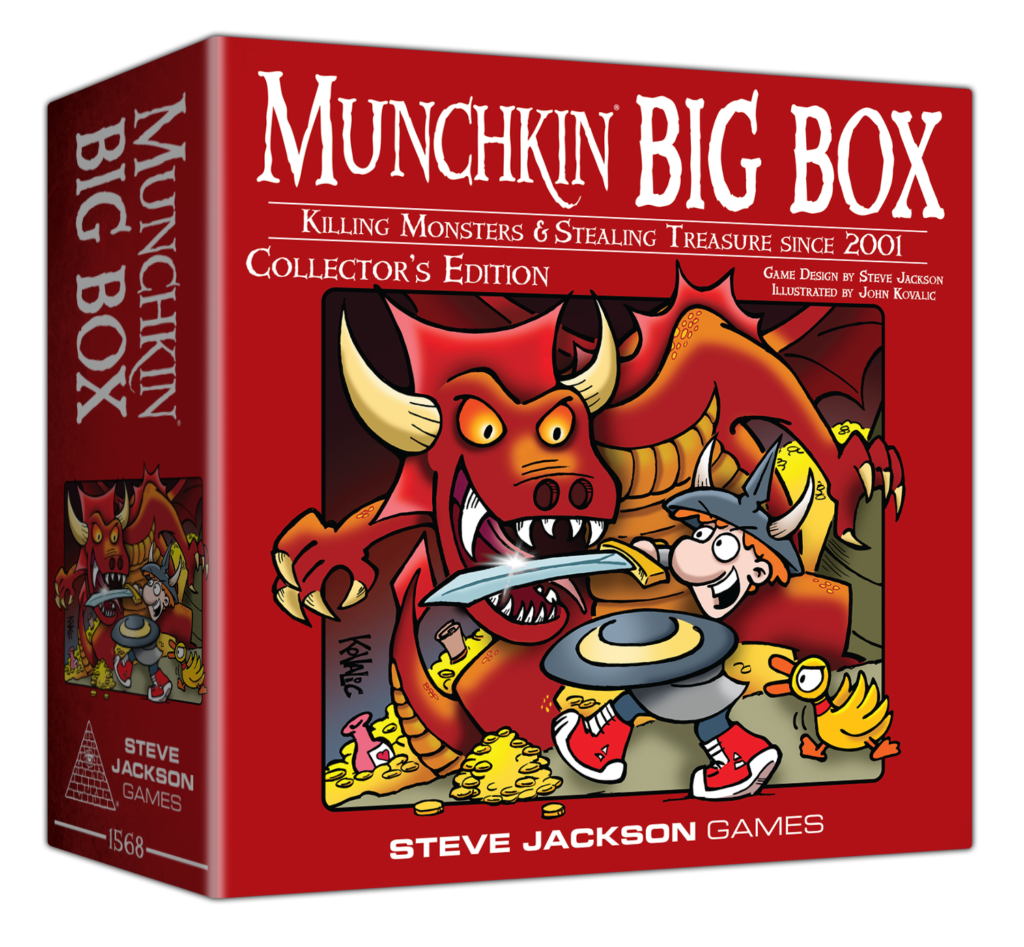
What you’re getting:
- A mind-blowing 650+ cards including all your faves and new exclusives
- A killer box that can hold over 2,000 cards and gear
- Swanky card separators and dual gameboards for ultimate play
- Six colorful dice, two Kill-O-Meters, and an updated rulebook to keep things spicy
- 12 Standies in various colors, standie bases, and a playable bookmark because why not?
- The cherry on top? A Limited Edition Spyke Enamel Pin and exclusive Munchkin decals!
Since its epic launch in 2001, Munchkin has been slaying at game nights worldwide. Now’s your chance to be part of the legend. Get ready to take a one-way ticket to Munchkin glory, and you need to do is click on to BackerKit and help this bad-boy come alive!
So, what are you waiting for? Summon your crew, back ’em on BackerKit, and let’s make the Munchkin Big Box a reality. Your adventure begins now – don’t miss out on the loot, the laughs, and the ultimate betrayal. Back it, unpack it, and start the munchkin madness cuz you KNOW HauntedMTL is up and ready to back!
Join the adventure on BackerKit and let’s slay this beast together! 🐉🗡️✨
Click here to back the Munchkin Big Box on BackerKit!
Don’t just play the game, BE the game. Let’s do this, Munchkinheads!
Continuing with video games I got to try out at PAX East, I was delighted to demo Let’s! Revolution! the debut game by developer and publisher BUCK. BUCK has historically been an animation and design studio, notably having worked on Into the Spiderverse and Love, Death, & Robots. Let’s! Revolution! marks their first foray into the world of video game development. I found this so interesting, I spoke to the Creative Director for Let’s! Revolution! on his career and how BUCK navigated that transition (find it here).
Let’s! Revolution! is a roguelike puzzle game inspired by the classic game Minesweeper. In it, you play as one of six heroes fighting their way along the dangerous roads to the capital city. Once there, you can defeat the tyrannical king and save the kingdom from his reign. Released in July of 2023, the game has been met with high praise. Unsurprisingly, this includes the game’s artistic and musical direction (by the team at Antfood), which is both stylistic and beautiful.
Watch the console reveal trailer here for a taste of the delightful animation and music:
I had the opportunity to play a 20 minute demo of Let’s! Revolution! on the PAX East show floor. I played alongside the Creative Director and other people who worked on the game. It’s important to note that this wasn’t long enough to get a feel for all the characters or the replayability of the game. But, it was definitely long enough to be enchanted by the game and the passion of the people who made it.
The core mechanics are inspired by Minesweeper. The player must use the power of deduction to uncover procedurally generated maze pathways to the exit. However, enemies are hidden along the way and can defeat the player before they reach their goal. Each character has their own special abilities that can help. Items and general abilities can also be bought or discovered to make your hero more powerful. All of these are limited in some way either by energy (your action currency) or limited uses per run.
From what I played, the gameplay is relatively simple with a mix of chance and strategy. I liked the cozy atmosphere, especially when combined with the ‘high stakes’ mechanics associated with Minesweeper. The UI was easy to understand and interact with while still being cohesive with the storytelling. And of course, the character design is exquisite and narratively driven, with many of the characters presenting as queer.
Having released on consoles earlier this month (April 2024), Let’s! Revolution! is even easier to access than ever. Let’s! Revolution! is a perfect game for those who love cozy roguelites and beautiful (queer) aesthetics. I definitely recommend it for fans of roguelites looking to try something fresh. Look for it anywhere you game!

Check out my other PAX posts here!
Gaming
Interview with Creative Director Michael Highland: Let’s! Revolution! @ PAX
Published
4 days agoon
April 19, 2024
Another game I had the chance to play at PAX East was, Let’s! Revolution!, a Minesweeper-inspired roguelite puzzle game by animation (and now game) studio, BUCK. I talk more about the game itself in another post. Here, I wanted to highlight the conversation I had with Michael Highland, the Creative Director for Let’s! Revolution! and his journey through video game development.
How did you become involved in video game development?
I studied digital media design in college; this was before there were many programs dedicated to game development. After graduating, I self-published a mobile game called Hipster City Cycle with friends. Over the next few years, I slowly got more freelance work as a game designer, and eventually landed a full-time role at thatgamecompany working on the follow-up to their 2012 GOTY Journey. I worked my way up there and was eventually the Lead Designer on Sky: Children of the Light. Working at thatgamecompany opened a lot of doors professionally. I eventually wound up at BUCK, where I saw the opportunity to help establish a new game studio within a very vibrant existing creative culture.
What has been the most challenging aspect of the development process?
Each studio has its own unique issues based on the people involved. There are commonalities like the need to fight feature creep and building consensus around ideas early in the process when all you have is an abstract grey box prototype to react to. At BUCK the biggest challenge has been channeling the abundance of creative energy and talent into a shippable product. There’s a ton of enthusiasm for games within the company, and without clear product-centric goals (who is the target audience, what platform are we releasing on, what’s the marketing strategy), projects have the tendency to spiral out of scope. Another challenge has been building credibility with publishers. BUCK has an amazing pedigree for animation and design, maybe the best in the world, but when we initially pitched ideas to publishers, they all said the same thing: looks great, but until you’ve shipped a game, you’re too high-risk. That’s what led to us self-publishing Let’s! Revolution! Now that we have a well-reviewed game out in the wild, I feel confident we’ll have more luck with publishers.
BUCK primarily has its roots in animation, what led the decision to start branching into video game development?
It started with a general excitement about the medium and a desire among the staff to work on a game. Leadership at BUCK is all about providing the staff with exciting creative opportunities, and getting to work on a game, is, for some, a creative dream come true. And putting BUCK content out in the world is a point of pride and a boost to morale. From a business perspective, the fact we can staff out game projects with the top animation and design talent in the world is a huge advantage. We’re already starting to see new opportunities for the service side of the business based on the success of Let’s! Revolution!
The art, unsurprisingly, is delightful. What were some of the priorities during the character design process and how did those influence the final hero designs?
Our Art Director Emily Suvanvej really led the charge on the look of the game. There are obvious influences like Studio Ghibli, Moebius, and Steven Universe. My shared goal with Emily was to make something together that reflected the diversity of the team’s artistic and lived experiences. The artists put so much love into the character designs and animation, it really shows.
Some of the primary game mechanics take inspiration from Minesweeper, what was the process like to create your own interpretation of those classic mechanics?
This article goes into depth on this topic. The TLDR is that we took a very iterative approach, at each stage trying to identify what was working about the prototype and lean into that. The initial game concept came together relatively quickly in part because our goal for this project was just to finish a game. We just focused on what was good and kept building on it. I wouldn’t say the final game is “perfect” – but we wound up with a much bigger and higher quality experience than I expected by not letting perfectionism get in the way of making good better.
Is there anything else you would like to plug or that you think is important for people to know about Let’s! Revolution! or other upcoming projects?
The music and sound design for the game is stellar. We worked with a creative audio company called Antfood and they knocked it out of the park. The audio got an honorable mention from IGF, which I think is extra impressive because most of the other games were audio-centric titles with some unusual hook to the sound design. For the OST, Antfood reworked all of the music from the game into a continuous flow, like a concept album. It’s so good. I love working with them.


